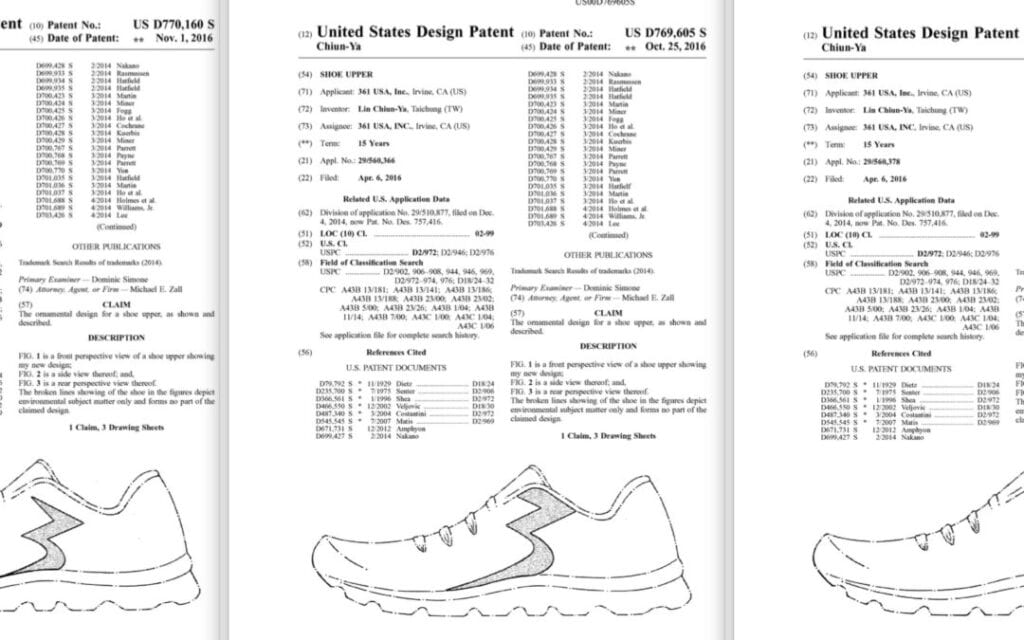Design Patents – Year in Review

Companies continue to see the value of design patents. Nike, Inc. is ranked 5th in the United States in the number of design patents granted to it in 2016, with a total of 275 issued design patents. Number one on the list is Samsung, with 1,629 issued design patents, above Apple Inc. with 433 issued design patents.
Of course, being number one in issued design patents didn’t help Samsung in a design patent dispute with Apple Inc. Apple won an infringement lawsuit that it brought against Samsung, claiming that Samsung infringed three of Apple’s design patents. Apple won at trial, and had been awarded almost $1 billion in damages. Samsung appealed to the Federal Circuit, and the damage award was reduced to $399 million. The case was appealed to the Supreme Court, which took up this case. The Supreme Court issued a decision clarifying how damages are calculated in design patent infringement cases, and remanded the case to the Federal Circuit for review of the damage award. It seems likely that the Federal Circuit will reduce the damage award to Apple, based on the Supreme Court’s decision. Nevertheless, is also seems likely that Apple will walk away with a substantial amount of cash, based on its design patent infringement claims.
The Apple v. Samsung case shows that design patents can be valuable.
To best utilize the value of a design patent, it’s important to understand what is protected by a design patent. A design patent covers the appearance of an object, to quote the United States Patent & Trademark Office, a design patent covers the ornamental design of an object. A design patent does not protect functional features.
A design patent has specific and relatively narrow coverage, and protects the specific design shown in the drawings. Nike clearly understands this, and has filed a design patent for many variations of shoe designs. Below is a small example of Nike’s 275 design patents. Nike obtained 3 design patents with variations on a basic theme.

These designs are similar, but they are not identical. The thunderbolt feature is slightly different in each patent. Nike may have filed design patent applications on each of these subtle variations because: (1) it was considering selling each of these designs; or (2) it may have done so to prevent others from selling shoes with these designs; or (3) it may done so because Nike is actually selling each of these shoe designs. These are all valid reasons for filing one or more design patents.
Design patents can have great value if properly utilized and understood. Please contact Adams Law Office if you have an invention that may benefit from the protection of a design patent.
